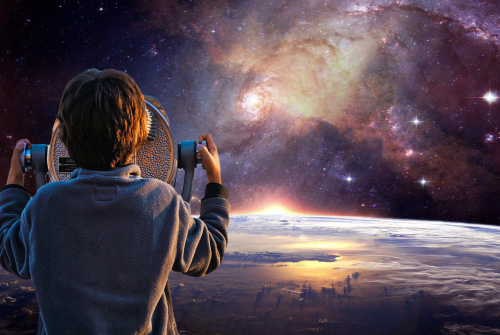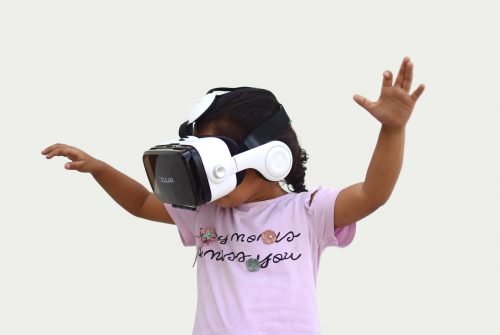Anthropocene: how humankind changes the planet
4 July 2018 | Written by Cristina Pozzi
Our era is the triumph of homo sapiens, who progressively increased its impact on nature and on the planet. For some time, the term Anthropocene has spread to express an era characterized by this human dominion over nature. But what does this mean?

June 8, 1783. Suddenly, the still active Icelandic volcano Laki begins to erupt and the explosion is so powerful that it opens up 130 craters. It will continue, relentless, for the next 8 months. The effects of this natural event are perceived throughout Europe and are also driven towards China.
In particular, in the years after 1783, there were slaughters of livestock due to poisonings that derived from soil contamination, thousands of people died and meteorological anomalies were happening.
To compare the power of this sudden event, we can consider that the amount of sulfur dioxide emitted during the eruption is 3 times higher than that emitted by European industry in 2006.
France is not excluded from the devastating effects of the 1783 eruption. Here meteorological anomalies occur due to climate change: first of all a huge overproduction, disastrous for the economy since it caused the fall of prices and the consequent impoverishment of the farmers; then drought, harsh winters and particularly bad summers, up to 1788, when a violent hailstorm destroys the crops.
A year later, in the summer of 1789, the people were exhausted by 6 years of hardship. We all know the history of the French Revolution.
This is not an isolated case: the fall of the government of Haiti counts among its causes the food crisis caused by climate change, just as the 2011 Arab revolution is strongly linked to the effects of a period of drought.
These are just a few examples of the fact that the great changes that affect humanity are caused by environmental changes that have the ability, in particular, to move vital resources and change the conditions of livability of a territory.
The relationship between the planet and man is not a one-way relationship: not only does the environment influence the history of humanity, but man also influences the climate with his activities. This process has accelerated since the industrial revolution, but it’s the result, in particular, of the new illuministic conception of science and technology as a mean to dominate and influence the forces of nature.
Now that we know the devastating effects of the Laki eruption, we can also reverse the point of view and reformulate our previous statement as follows: in 2006 alone, European industry poured into the atmosphere a third of the amount of carbon dioxide compared to the one released by the Laki volcano in 1783. This means that in 2006 we influenced the climate at least one third compared to that event, which was then uncontrollable for us, with effects that probably, even in this case, don’t end in the first twelve months, but will persist in the following years.
Here’s what we mean when we talk about a new era characterized by our ability to strongly influence the planet’s climate. The definition Anthropocene was born, in its current form, in 2000. Already in 1873, however, we can find the first observations by the geologist Antonio Stoppani, who even without a term to define it, focuses on a new force able to influence the planet: human kind.
To get a clearer idea, let’s see what happens by releasing the carbon dioxide we talked about in the atmosphere. The climate is controlled in large part by the amount of solar energy that manages to reach the Earth’s surface and stay close. Gases such as carbon dioxide increase the ability to retain heat and consequently increase temperatures.
If we look at the natural trends of solar activity, scientists tell us that we should not expect big changes in the next millennia, but if we look at trends in our activity on the planet, we soon realize that the most critical factors affecting the climate they all depend on us and our business.
In contrast to the Holocene, a previous geological era lasting eleven thousand and seven hundred years, the impact of men on Earth has increased dramatically, so much so as to bring the planet to a new geological period.
To get an idea, data from 2017 say that today we already exploit 50% of the land available to produce food, build cities, roads and mines, we use 40% of the disposable production of the planet, and we control 3/4 of the resources of fresh water. Furthermore, man is the largest animal on the planet and, with its activities, threatens to extinction about 1/5 of the existing species.
Looking towards the next decades, it’s therefore clear that the way in which the climate will change depends only on us.
In particular, if we take the 2050 as a reference and compare it with 1950, we can expect the following changes: the surface temperature will increase by 2 degrees celsius compared to 1950 (in the big cities we talk about 4 or 5 degrees) and the level global sea will grow 30 centimeters.
Moreover, melting ice reserves, droughts and floods, extreme weather events and more difficult to predict and rising sea levels all affect the most precious resource on our planet: water.
The effect of climate change on water is central, especially if it is superimposed on other problems of 2050 that concern it closely, such as the demographic increase and globalization, which will cause/could cause an increase in water demand and provoke intensive exploitation and pollution of groundwater.
And so, in 2050, migratory flows will increase dramatically (+140 million people), which will be caused not only by the search for better education, work, and the escape from difficult political and social situations, but also by floods, droughts, rains, monsoons and other natural disasters that will provoke a crisis that will involve many sectors, especially agriculture.
On the other hand, the Nordic countries will be able to exploit a more favorable climate for certain crops. This will lead to a change in the balance of global trade. In addition, in the summer, the Arctic Sea will be more and more free from the ice, so as to allow the exploitation of new trade routes: the shortest way to connect Asia and the West passes from there.
And the effects of changes in the Arctic do not stop at the economy, but fuel even more the climate change of the entire planet.
But what can we do?
First of all, increase prevention to reverse, where possible, the trend.
Like all ecosystems, the Earth works for input and output. The input is the input energy that activates the processes, the output is the waste, the resulting waste. An ecosystem is sustainable the more it can activate its processes, efficiently disposing of waste in a zero-sum game, recycling it so that it produces energy in turn. The various initiatives that ban plastic or petrol cars go in this direction. Let us support them and remember that we have a great responsibility towards the destiny of the planet and its life (which does not only concern us humans but also animals and plants).





